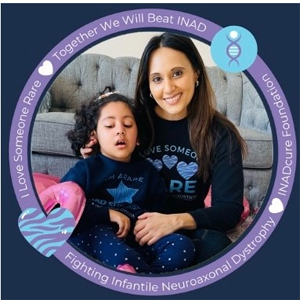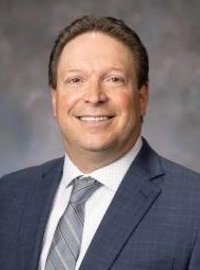CDMOs And Hospitals Pursue Cures For Rare Disease

By Louis Garguilo, Chief Editor, Outsourced Pharma

Her infant daughter is diagnosed with an ultra-rare disease. She and her husband know little about the pharmaceutical industry, but learn no biotech or pharma is interested in developing a drug or therapy for the condition.
Leena Panwala springs into action. She cofounds (with her husband) and becomes president of the INADcure Foundation, a 501c3 nonprofit established to help find a cure for Infantile Neuroaxonal Dystrophy (INAD) and other forms of PLA2G6-related neurodegeneration (PLAN).
 This is the final part of a trilogy focused on Panwala’s sudden journey into development and manufacturing outsourcing. Here’s what we’ve learned so far:
This is the final part of a trilogy focused on Panwala’s sudden journey into development and manufacturing outsourcing. Here’s what we’ve learned so far:
- The only hope for saving children afflicted with INAD is the immediate pursuit of gene therapy.
- A CDMO willing to take on the development and manufacturing for this ultra-rare disease emerges, providing a path forward.
- The CDMO, it turns out, is one we featured in March of 2020, when new operational models were emerging in the outsourcing space.
- A biopharma consultant plays a crucial role in leading the foundation to a relationship and contract with the CDMO.
- Funding to hire the consultant comes from a philanthropic organization.
This final editorial on Panwala’s courageous and enlightening journey begins where we started our discussion, with two questions I asked her:
When you began to investigate the disease Ariya was diagnosed with, and established your foundation with other parents of afflicted children, did you expect you were going to work with a biotechnology company?
Did you even know there were these other entities called contract development and manufacturing organizations (CDMOs)?
Biotechs Out, CDMOs In
“I heard it all the time from the beginning,” she starts her reply. “Because our condition is so rare, it's hard to get a biotech interested. So I didn't have expectations of partnering with one.”
“But don’t get me wrong,” she adds. “We did at least pursue that biotech avenue, and had multiple conversations with several biotechs. It just kept coming back that we were too rare a disease.”
After these conversations, and studying the paths of other foundations of rare diseases, she looked for other options. .
“I had studied how other rare-disease organizations, like SmashSMARD and CureSPG50, effectively completed their development programs without a biotech.”
“However, in those early days, I knew relatively little about the use CDMOs for development manufacturing. Honestly, all I knew was if other organizations could advance therapies, so could we, regardless of who we had to collaborate with. I was going to figure it out.”
We now know she did.
Her defined goal, she says, now many months later and quite versed in the processes of our industry, is to take her gene-therapy program “to the finish line, meaning through preclinical development and studies, the IND process, into the clinic and administered to some of our children.”
“These realizations happened in parallel with the thought that if a biotech ever does become interested prior getting to the finish line, great; we're always open to having that discussion; but until then, our organization needs to pursue our own program.”
And there is some biotech reticence, anyways.
“My fear is when there’s a biotech in the picture, they're not solely focused on one condition, right?” she says.
“They have programs for various conditions in their pipelines, so we could not guarantee that INAD was their priority. Also, our program could be terminated if it no longer makes sense for them, if they go out of business or get acquired. There is unquestionably a risk there.
“For us, this disease is our sole priority.”
Hospitals For Outsourcing
Obviously, no one would suggest a CDMO or other external partner will consider a single client’s program as its “sole priority” either.
But Panwala found an organization that could get her as close to that feeling as possible – a CDMO spun out of, but still very much affiliated with, a children’s hospital.
And her discovery leads us to a part of the outsourcing landscape we need to pay more attention.
Besides the organization INADcure selected, Andelyn Biosciences (details in part two), there are others of this genre, including The Ohio State University Drug Development Institute, and Seattle Children’s Research Institute.
As reported in 2020, and according to Michael Jensen, M.D., chief therapeutics officer for Seattle Children’s Hospital, vice president of its nonprofit spinout, Seattle Children's Therapeutics, the affiliated Research Institute decided “it would need to ‘think and act’ more like a biotech company to ramp up the development of medicines for pediatric use to treat cancer and other typically orphan-status diseases of childhood.”
Seattle Children’s Therapeutics aims to “create a new model of drug development where all the component parts—from basic research in the lab and therapeutics manufacturing to regulatory compliance and clinical trials management—are working in sync to accelerate and scale the availability of next-generation cell and gene therapies that meet the unique needs of the pediatric population.”
Andelyn, for its part, was spun out as a for-profit in 2020, but remains majority owned and affiliated with Nationwide Children’s Hospital, where a close relationship allows for the utilizing of the substantial and various resources there.
 Wade Macedone, CEO of Andelyn, perhaps unintendedly speaking for many throughout the industry, says the ultimate goal is to further streamline the entire rare-disease development process, open accessibility to sponsors of all types, “and keep it all closer to and aligned with the actual patients.”
Wade Macedone, CEO of Andelyn, perhaps unintendedly speaking for many throughout the industry, says the ultimate goal is to further streamline the entire rare-disease development process, open accessibility to sponsors of all types, “and keep it all closer to and aligned with the actual patients.”
“We're part of the Accelerating Medicines Partnership Bespoke Gene Therapy Consortium under the Foundation for National Institute of Health, which focuses on streamlining regulatory frameworks to accelerate gene therapies for rare diseases.
“We've been meeting with the FDA, the EMA, anyone that could assist in driving efficiencies into the process of quickly developing and getting new cell and gene therapies to patients,” he says.
One part of that is an attempt to harmonize and remove barriers that are slow and costly. It’s an effort to accelerate regulatory approvals, “and coincidingly cut a recognizable standard of expectations on manufacturing and product quality that isn't overburdensome to a foundation like INADcure, or even the Pfizers or Biogens of the world.”
One thing is certain: CDMOs (if we should still call them by that name) and hospitals have come a long way as leaders, enablers, and combined entities of our drug and therapy development service industry.
------------
Also read:
A Mother Picks A CDMO To Advance Treatment For Her Daughter
A CDMO's Mission For The Pursuit Of Rare Diseases
